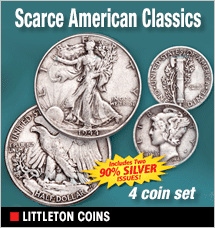Silver Screen, Golden Years
The Best Years of Our Lives

 The Best Years of Our Lives was essentially about 1946, illustrating a year ironically more tenuous than celebratory, in a victorious nation etched with anxiety about its future. The year 1946 means a little less to us today, except as the start of the baby boom. We are fairly egocentric about things like that.
The Best Years of Our Lives was essentially about 1946, illustrating a year ironically more tenuous than celebratory, in a victorious nation etched with anxiety about its future. The year 1946 means a little less to us today, except as the start of the baby boom. We are fairly egocentric about things like that.
Director William Wyler shows the problems of three veterans: of Homer’s prosthetic hooks; of Al’s restless dissatisfaction with his bank job and his ready relief in drink; and of Fred’s disillusionment that the wife, home in the suburbs and good job he thought would be waiting for him after the war have fizzled out, one by one. Dana Andrews plays Fred, spending much of the movie lugging around an overstuffed army suitcase, trying to find “home.”
Wyler’s treatment of Homer, played by amputee Harold Russell, was sensitive and straightforward. Homer pulls his hooks out into view early in the film when he signs his name on a paper. We see Homer shaking “hands” repeatedly through the film, knocking on doors, drinking, eating, handling money in a billfold, never hiding his hooks but using them as naturally and as often as he would his hands, even playfully banging out “Chopsticks” in a piano duet.
Wyler forces us to look at the hooks. In one splendid scene, Homer visits his uncle’s bar, and feeling at home with his pals and away from the nervousness of his family, proceeds to hold a conversation while pushing his sailor hat back farther on his head, handling a beer in a pilsner glass, shaking “hands,” and slamming his hook down on the bar as a man might slam his fist to make a point. It is stupendous for its very naturalness and simplicity.
The minor actors in The Best Years of Our Lives tell us even more about the three veterans. Fred’s father, played by Roman Bohnen, has a very brief but exceptionally moving scene as he reads aloud his son’s war citations. Homer’s younger sister, not uncomfortable with his hooks, stares openly fascinated at them as children will. Ray Collins is both pompous and subtly sinister as Al’s hypocritical boss. Hoagy Carmichael plays the easygoing Uncle Butch, who gives Homer a sense of perspective.
It is left to the minor characters of Butch and Al’s son, Rob, to introduce the post-war world for us by discussing the atom bomb. The central characters are too preoccupied with jobs, and fitting into their families and fitting into their clothes to care about the new geopolitical realities.
In this film, the women the three men have come home to are not diminished; it is their story, too. Al’s wife Milly, played by Myrna Loy, and his daughter Peggy, played by Teresa Wright, display heartsick fears and frank desires. One of the most memorable scenes in the film is Fred’s nightmare, when a drunken Fred is put to bed by Peggy, a young woman he met only hours before, suffers a nightmare from what today would be called post-traumatic stress, and is comforted by Peggy, in her bed, yet there is nothing sensationalized or exploitive about it.
The Best Years of Our Lives was made in the first year of the baby boom, and now the first boomers are entering retirement. Their parents’ generation could be no better represented than by Harold Russell, who enlisted the day after Pearl Harbor, and later lost his hands. Two of the many Academy Awards won by that film were won by him. As a senior, he sold them both in 1992, to pay for his wife’s medical bills. Retirement, as the boomers may learn, also has its horrors.
We see Homer marry his sweetheart, but his triumph in adjusting to civilian life is tempered by the real knowledge that he will never be able to turn a doorknob or button his own shirt. He will always need a little help with some things.
When Fred and Peggy finally embrace at the end of the film he tells her that it won’t be easy, that they will have to work, “get kicked around.” It is the last line of the film, and not very romantic. She beams a radiant smile, wondrous at only the positive side of his double-edged declaration, completely ignoring the warning. We see the warning. We are still imagining their uncertain future.
Jacqueline T. Lynch is the author of Ann Blyth: Actress. Singer. Star., and several other non-fiction books on history and classic film criticism, as well as novels. www.JacquelineTLynch.com.



























































